Nestled in the heart of Hanoi’s Old Quarter, the Old East Gate (Ô Quan Chưởng) stands as a remarkable testament to the city’s rich cultural heritage and historical significance. This ancient gate, with its intricate architectural details, has witnessed the ebb and flow of Hanoi’s past, serving as a symbolic entrance to the city’s vibrant soul.
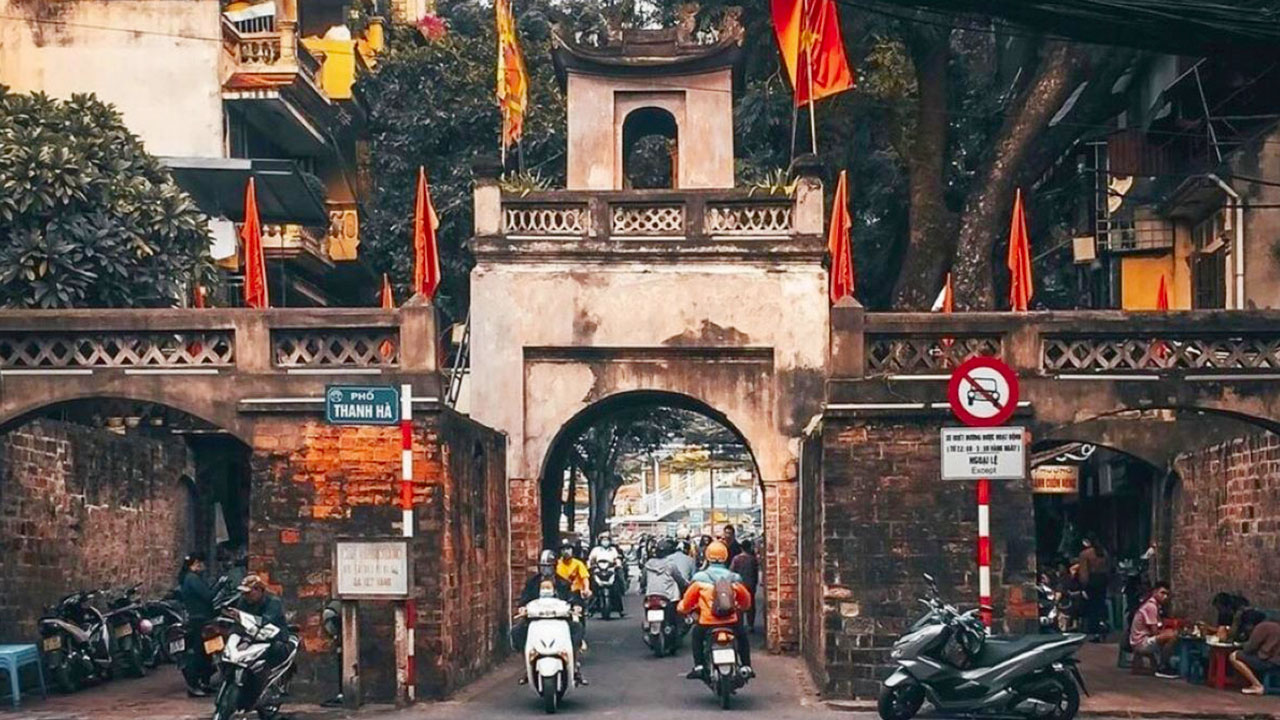
Where is Old East Gate?
The Old East Gate is situated in the bustling Hoan Kiem District, at the intersection of Hang Chieu and Dao Duy Tu streets. This strategic location within the Old Quarter of Hanoi places it at the crossroads of the city’s most iconic landmarks and vibrant commercial hubs.
Hanoi’s Old Quarter
The Old Quarter, with its maze of narrow streets and traditional tube houses, is the beating heart of Hanoi’s cultural identity. This densely packed neighborhood, dating back to the 15th century, is a living museum where the past seamlessly blends with the present. Each street is dedicated to a specific trade, ranging from silk and lacquerware to traditional medicines and handicrafts.
Proximity to Historic Sites
The Old East Gate’s prime location allows easy access to some of Hanoi’s most renowned historical sites. The nearby Thang Long Citadel, a UNESCO World Heritage Site, offers a glimpse into the city’s imperial past, while the iconic Hoan Kiem Lake and its legendary Turtle Tower are just a stone’s throw away.
How to Get to Old East Gate Hanoi
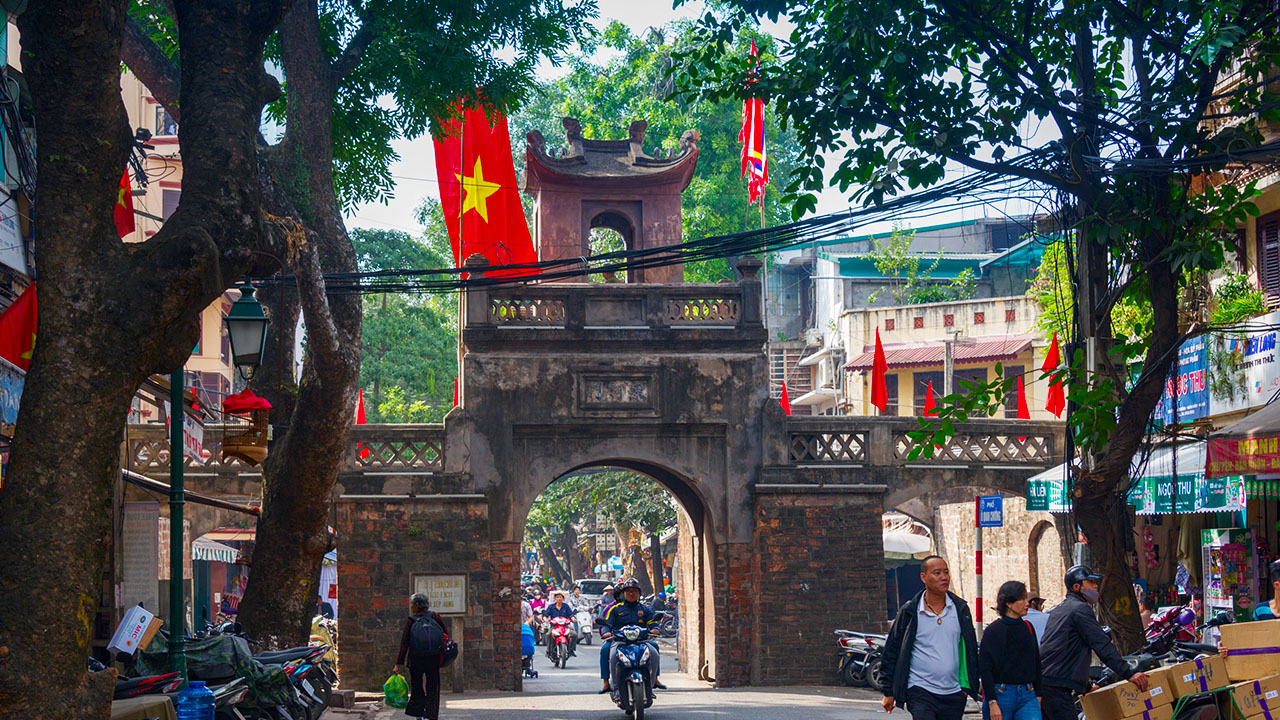
Getting to the Old East Gate in Hanoi is relatively straightforward, thanks to the city’s well-connected public transportation system.
By Taxi or Ride-sharing Services
One of the most convenient ways to reach the Old East Gate is by taking a taxi or using ride-sharing services like Grab or Go-Viet. Simply provide the driver with the address, “Ô Quan Chưởng, Hang Chieu Street, Hoan Kiem District, Hanoi,” and they will navigate you to the gate.
By Public Transportation
For those who prefer to explore the city like a local, Hanoi’s public transportation network offers an affordable and efficient option. Take the bus or hop on the city’s modern metro system, disembarking at the nearest stop to the Old Quarter, and follow the signs or ask locals for directions to the Old East Gate.
Introducing Old East Gate

The Old East Gate, also known as Ô Quan Chưởng, is a remarkable architectural gem that dates back to the early 19th century during the reign of King Le Hien Tong of the Nguyen Dynasty. Originally constructed as one of the main gates to the Imperial City of Thang Long (now Hanoi), it served as a strategic entry point for traders, diplomats, and travelers alike.
A Glimpse into the Past
As you approach the Old East Gate, you’ll be immediately struck by its imposing and intricate design. The gate’s distinctive red lacquered wooden structure, adorned with intricate carvings and intricate details, is a true testament to the craftsmanship and artistry of Vietnamese architecture.
Symbolic Significance
Beyond its physical beauty, the Old East Gate holds profound symbolic significance. It represents the transition from the bustling commercial district of the Old Quarter to the serene and sacred spaces within the Imperial City. This gateway served as a literal and metaphorical threshold, separating the realms of daily life and imperial power.
Explore the Special Architecture of Old East Gate Hanoi
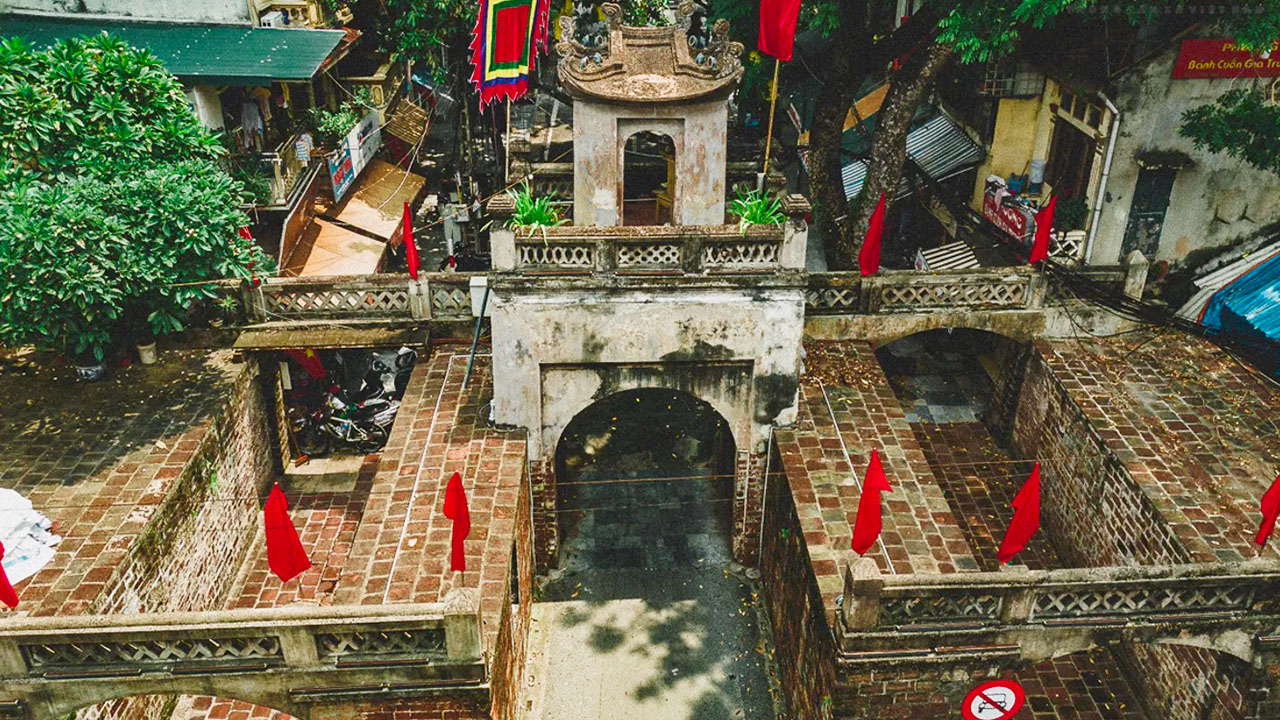
The Old East Gate is a true architectural marvel, showcasing the ingenuity and craftsmanship of Vietnamese builders from centuries past. Its unique design and construction techniques are worth exploring in greater detail.
Traditional Vietnamese Architecture
The gate’s structure exemplifies the principles of traditional Vietnamese architecture, which emphasizes harmony with nature, simplicity, and functionality. The use of wood, tiles, and lacquer creates a warm and inviting atmosphere, while the intricate carvings and decorative elements add a touch of elegance and cultural significance.
Fusion of Influences
While deeply rooted in Vietnamese traditions, the Old East Gate also exhibits influences from neighboring cultures, reflecting the region’s rich history of cultural exchange. Elements of Chinese and French architectural styles can be observed in the gate’s design, creating a fascinating fusion of aesthetics.
Attractions Near Old East Gate
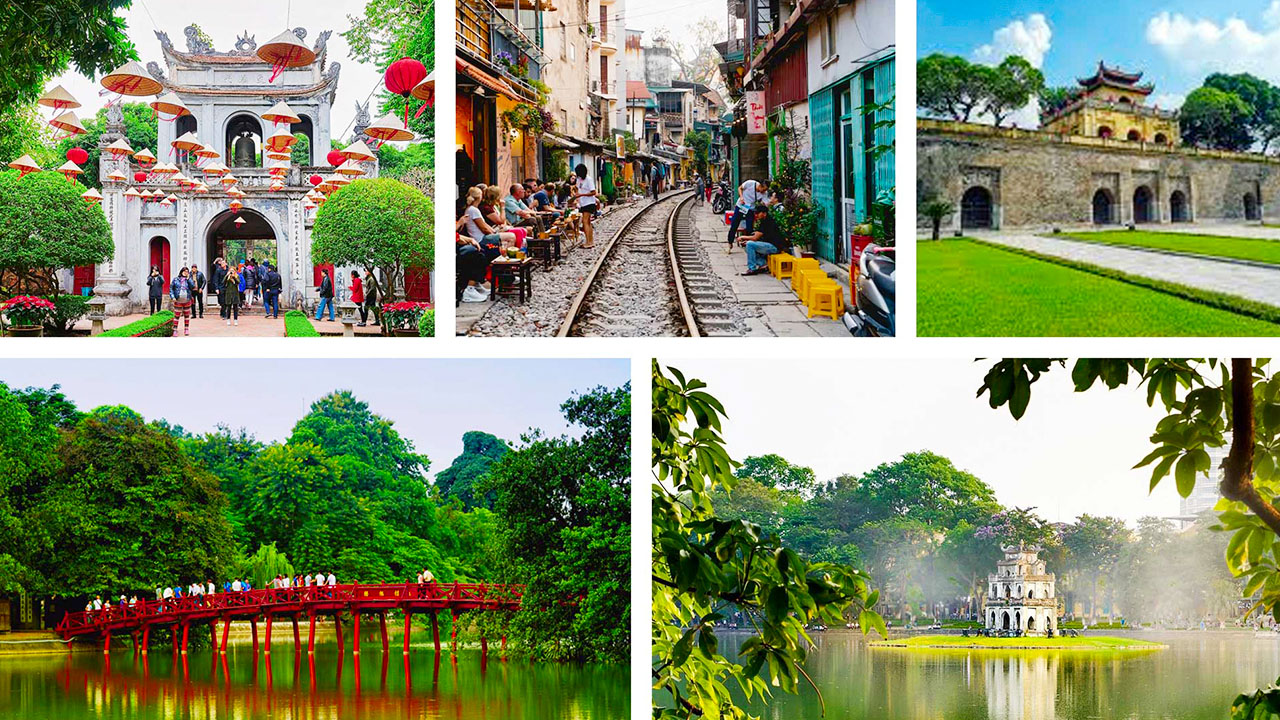
While the Old East Gate itself is a captivating sight, its location within the historic Old Quarter offers visitors a plethora of nearby attractions to explore.
Dong Xuan Market: Merely steps away from the Old East Gate, the vibrant Dong Xuan Market beckons with its bustling atmosphere and endless array of goods. This sprawling market is a true sensory experience, where you can find everything from fresh produce and traditional handicrafts to textiles and souvenirs.
Bach Ma Temple: Tucked away in a quiet corner of the Old Quarter, the Bach Ma Temple is a serene oasis of tranquility. This ancient temple, dedicated to the White Horse Goddess, is a popular spot for locals to pray and make offerings, offering visitors a glimpse into the city’s rich spiritual traditions.
Long Bien Bridge: A short walk from the Old East Gate will take you to the iconic Long Bien Bridge, a remarkable feat of engineering that spans the Red River. Built during the French colonial era, this historic bridge is not only a practical transportation link but also a popular spot for capturing stunning views of the city skyline.
Hoan Kiem Lake: No visit to Hanoi is complete without a stroll around the picturesque Hoan Kiem Lake. This peaceful urban oasis, located just a few blocks from the Old East Gate, is home to the iconic Turtle Tower and offers a tranquil respite from the city’s hustle and bustle.
Thang Long Citadel: For those interested in delving deeper into Hanoi’s rich history, the Thang Long Citadel is a must-visit attraction. This UNESCO World Heritage Site, located within walking distance of the Old East Gate, showcases the remnants of the ancient Imperial City, offering a glimpse into the city’s past as the capital of Vietnam.
Don’t Forget to Enjoy Hanoi Street Food
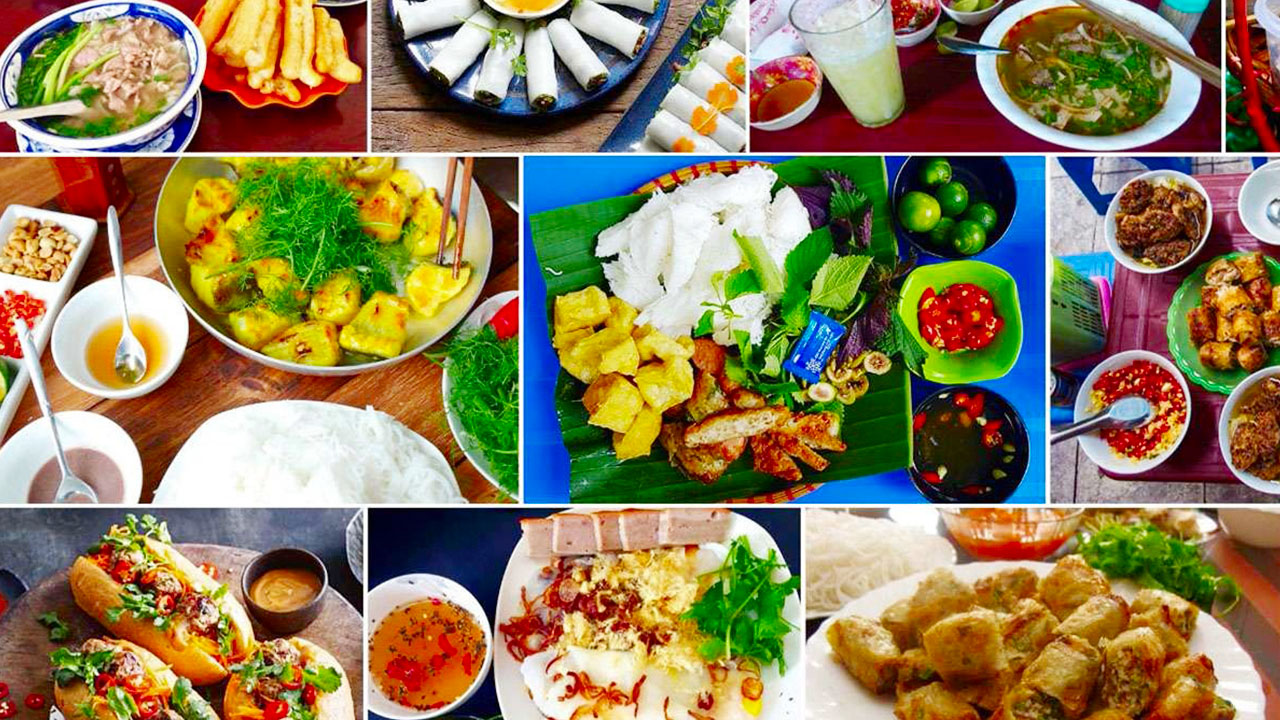
While exploring the Old East Gate and its surroundings, be sure to indulge in Hanoi’s legendary street food scene. The Old Quarter is a culinary paradise, with every narrow alleyway and bustling street corner offering a tantalizing array of local delicacies.
Pho Hanoi: No visit to Hanoi is complete without savoring a steaming bowl of the city’s iconic pho. This beloved noodle soup, made with fragrant broth, rice noodles, and a variety of toppings like beef, herbs, and lime, is a true culinary staple.
Bun Cha Hanoi: Another must-try dish is the famous bun cha, a delectable combination of grilled pork patties and noodles, served with a tangy dipping sauce and fresh herbs. This dish is a beloved specialty of Hanoi and a testament to the city’s rich culinary heritage.
Banh Mi Hanoi: The iconic banh mi, a Vietnamese baguette sandwich packed with an array of savory fillings, is a portable and delicious way to fuel your exploration of the Old East Gate and its surroundings. From classic variations to creative fusion fillings, there’s a banh mi to suit every taste.
Grilled Skewers: As you wander the streets of the Old Quarter, you’ll encounter countless street vendors offering a mouthwatering selection of grilled skewers. From succulent chicken satay to fragrant lemongrass beef skewers, these portable and flavorful bites are the perfect snack to enjoy on the go.
Donuts: For those with a sweet tooth, Hanoi’s donuts are a must-try. These fluffy, sugar-coated delights are a beloved street food staple and can be found at countless stalls throughout the Old Quarter. Enjoy them hot and fresh from the fryer for an unforgettable treat.
Conclusion
The Old East Gate (Ô Quan Chưởng) in Hanoi is a captivating blend of history, architecture, and cultural richness. This ancient gateway not only serves as a physical entrance to the city’s vibrant Old Quarter but also as a symbolic portal to Hanoi’s fascinating past. Whether you’re a history buff, an architecture enthusiast, or simply a curious traveler seeking to immerse yourself in the city’s essence, the Old East Gate and its surroundings offer an unforgettable experience. Explore its intricate details, wander the nearby attractions, and savor the flavors of Hanoi’s legendary street food scene – this historic gem is sure to leave you with cherished memories and a deeper appreciation for the city’s enduring charm.


